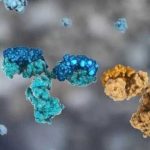Diarrheal diseases, particularly those caused by rotavirus, are a significant global health burden, especially in young children. Rotavirus is one of the leading causes of severe diarrhea in infants and young children worldwide, leading to substantial morbidity and mortality. In the quest for effective treatments, Nitazoxanide 500 mg has emerged as a potential therapeutic agent.
Understanding Rotavirus and its Impact
Rotavirus is a highly contagious virus that primarily affects children under five years old. It is characterized by symptoms such as severe watery diarrhea, vomiting, fever, and abdominal pain. The dehydration resulting from these symptoms can be life-threatening if not managed promptly and effectively. While vaccines have significantly reduced the incidence of rotavirus infections, the virus still poses a serious health threat in regions with limited access to healthcare and vaccination programs.
Nitazoxanide: An Overview
Nizonide 500 is an antiparasitic and antiviral medication initially approved for the treatment of protozoal infections such as giardiasis and cryptosporidiosis. It has a broad spectrum of activity, which includes efficacy against various viruses, bacteria, and protozoa. Its antiviral properties have garnered interest in treating viral gastroenteritis, including rotavirus infections.
Mechanism of Action
Nitazoxanide works by interfering with the production of viral proteins. It targets the viral protein synthesis process, thereby inhibiting the replication of the virus. For rotavirus, Nitazoxanide disrupts the maturation of viral particles within infected cells, reducing viral load and the severity of symptoms. This mechanism is distinct from that of traditional antidiarrheal drugs, which often focus on symptomatic relief rather than addressing the underlying viral cause.
Clinical Evidence and Studies
Several clinical studies have investigated the efficacy of Nitazoxanide in treating rotavirus-induced diarrhea. A key study published in “The Lancet” involved a randomized controlled trial with children suffering from severe rotavirus diarrhea. The study found that Nitazoxanide significantly reduced the duration of diarrhea compared to a placebo. Children treated with Nitazoxanide experienced an average reduction in diarrhea duration by approximately one day.
Another study published in the “Journal of Infectious Diseases” supported these findings, showing that Nitazoxanide reduced the viral load in the stool and shortened the duration of symptoms in children with rotavirus gastroenteritis. These studies suggest that Nitazoxanide not only alleviates symptoms but also directly impacts viral replication.
Advantages of Nitazoxanide
One of the primary advantages of Nitazoxanide is its broad-spectrum antiviral activity. This characteristic makes it a versatile option for treating various viral infections, including those resistant to other treatments. Additionally, Nitazoxanide has a favorable safety profile. It is generally well-tolerated, with mild gastrointestinal symptoms being the most commonly reported side effects.
Another significant advantage is its oral formulation, which is easy to administer, particularly in pediatric populations. This ease of administration is crucial in settings where intravenous treatments are not feasible. Moreover, Nitazoxanide is relatively affordable and accessible, making it a practical option for low-resource settings.
Limitations and Considerations
Despite its promise, Nitazoxanide is not without limitations. The reduction in diarrhea duration, while statistically significant, is relatively modest. In severe cases of rotavirus diarrhea, even a one-day reduction can be clinically meaningful, but it may not be sufficient as a standalone treatment in all cases.
Furthermore, the effectiveness of Nitazoxanide can vary based on factors such as the timing of administration, the severity of infection, and the presence of co-infections. Early administration appears to be crucial for optimal outcomes, which may pose a challenge in settings where access to healthcare is delayed.
Another consideration is the need for more extensive and diverse clinical trials. Most existing studies have been conducted in controlled settings, and there is a need for real-world evidence from diverse populations and healthcare environments to fully understand the drug’s efficacy and safety profile.
Practical Application and Future Directions
Incorporating Nitazoxanide into treatment protocols for severe rotavirus diarrhea requires careful consideration of the local healthcare infrastructure and resources. In regions where rotavirus is prevalent and healthcare access is limited, Nitazoxanide could be a valuable addition to existing treatment strategies, complementing vaccination efforts and improving patient outcomes.
Looking forward, further research is needed to optimize the use of Nitazoxanide. This includes studies exploring the drug’s efficacy in combination with other treatments, its impact on different rotavirus strains, and its use in diverse patient populations. Additionally, investigating the potential of Nitazoxanide in preventing severe outcomes in other viral gastroenteritis infections could expand its therapeutic utility.
Conclusion
Nitazoxanide presents a promising option for the treatment of severe rotavirus diarrhea, offering benefits in terms of antiviral action, safety, and ease of administration. While it is not a cure-all, its ability to reduce the duration and severity of diarrhea can significantly impact patient care, particularly in resource-limited settings. Continued research and real-world application will be crucial in fully realizing the potential of Nitazoxanide and integrating it into comprehensive strategies to combat rotavirus and other viral gastroenteritis infections.





